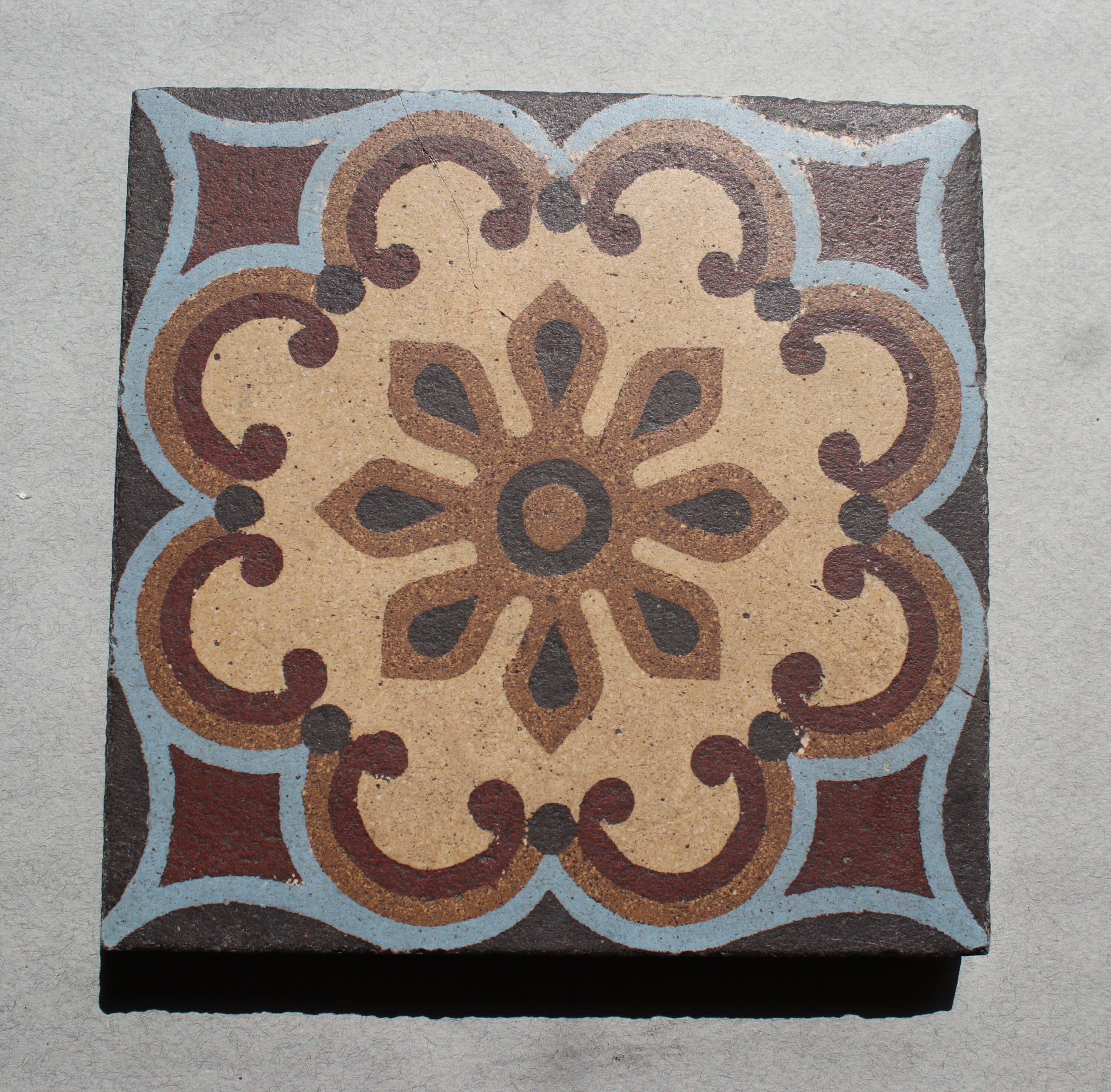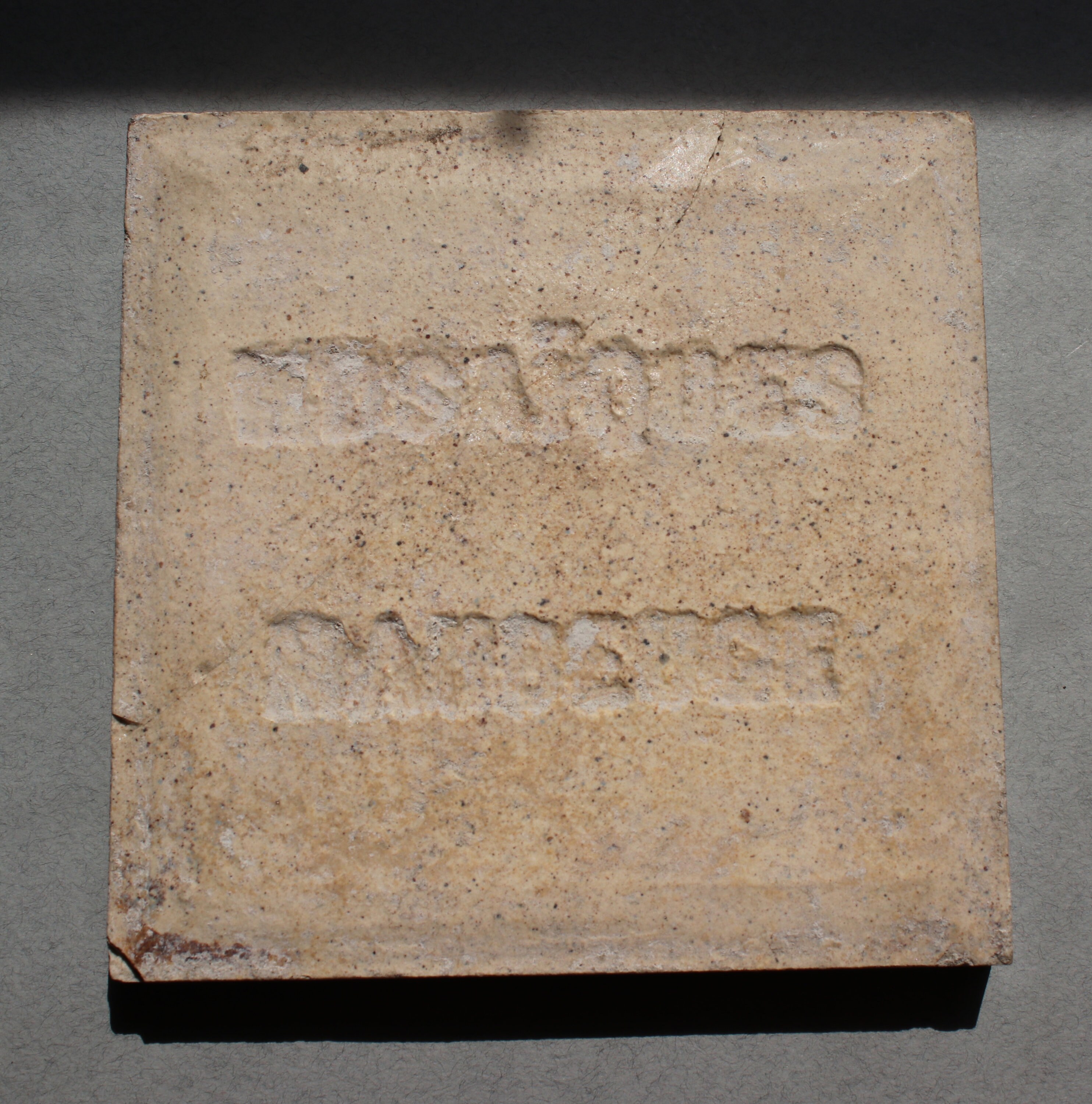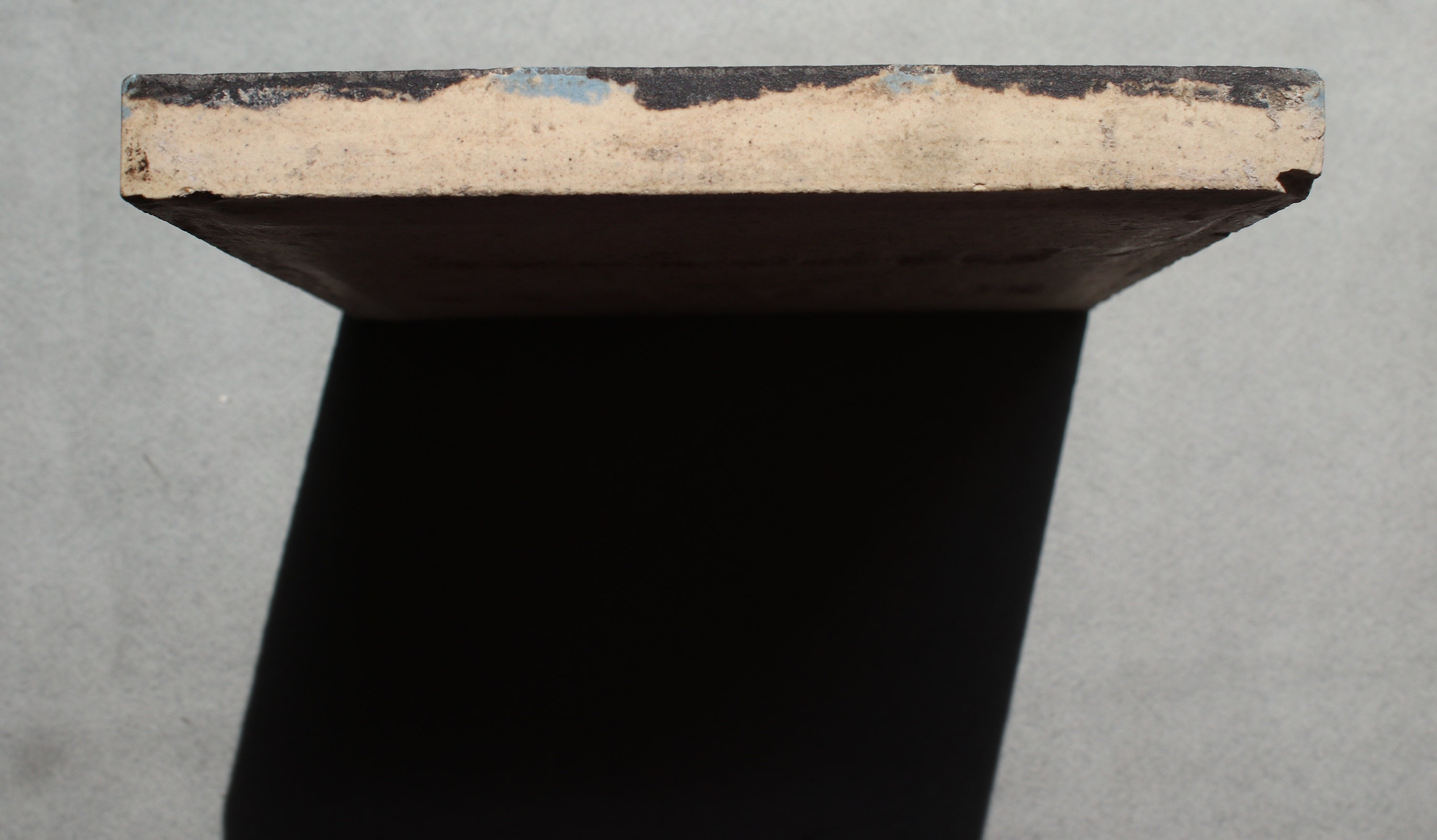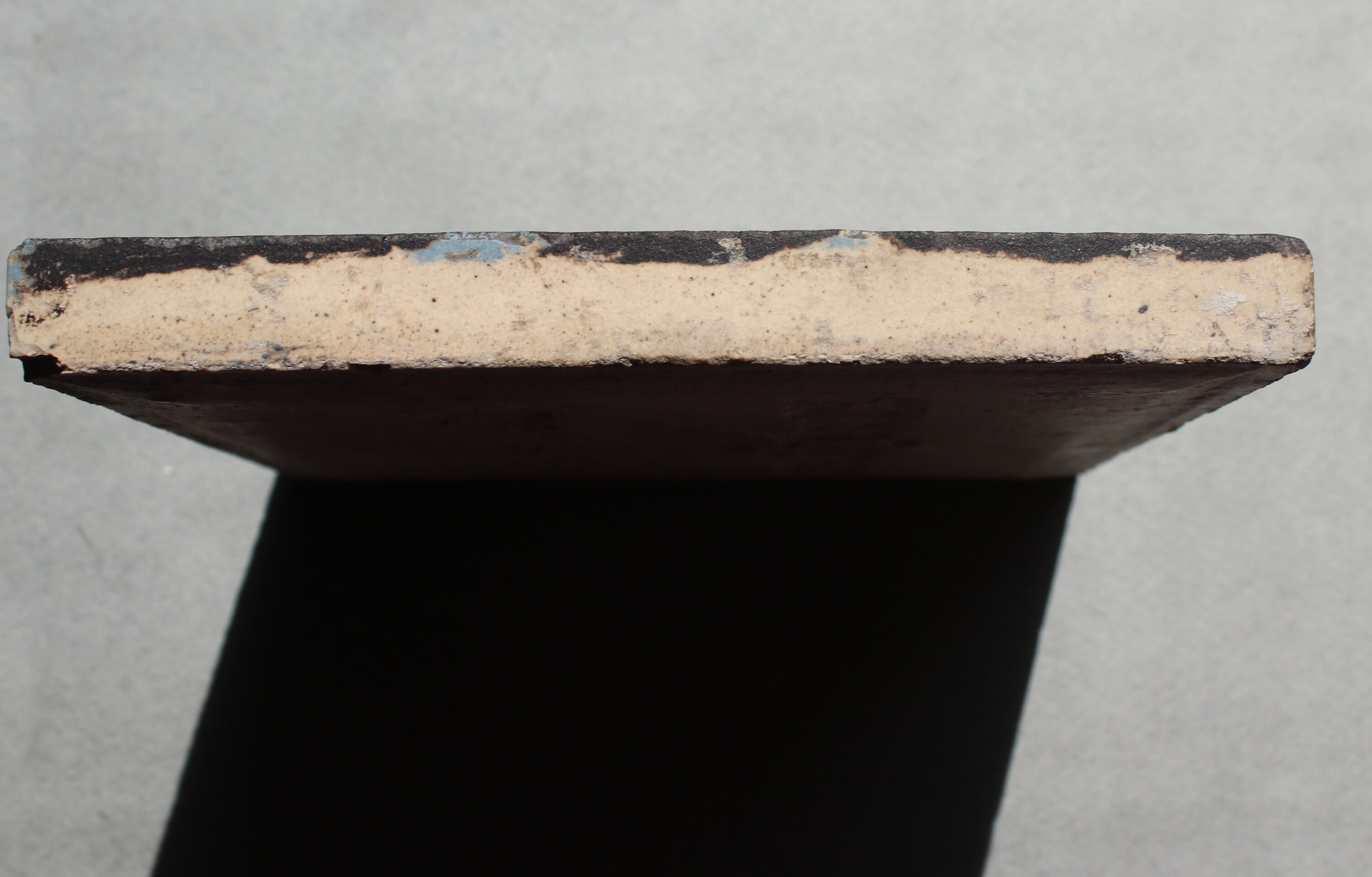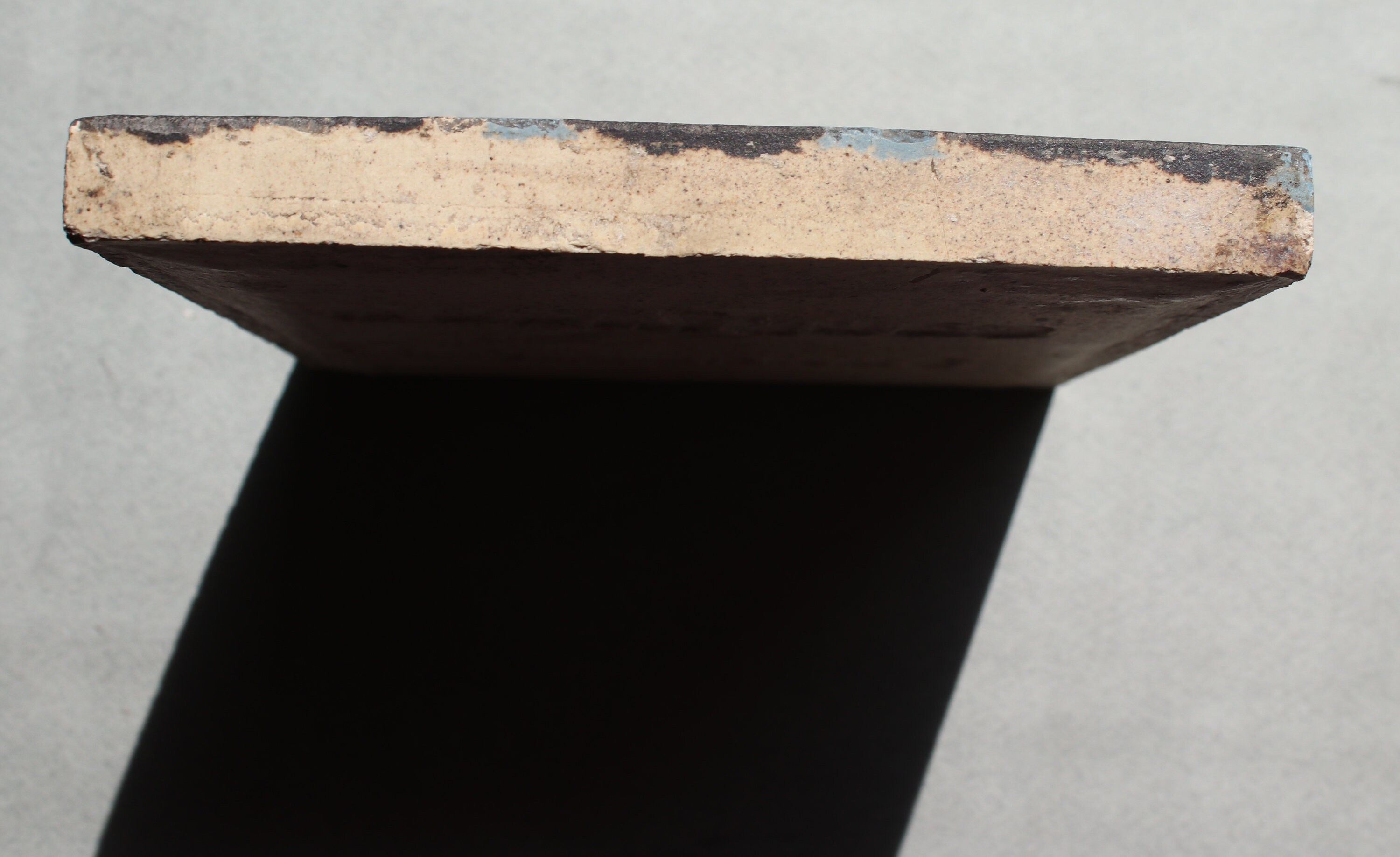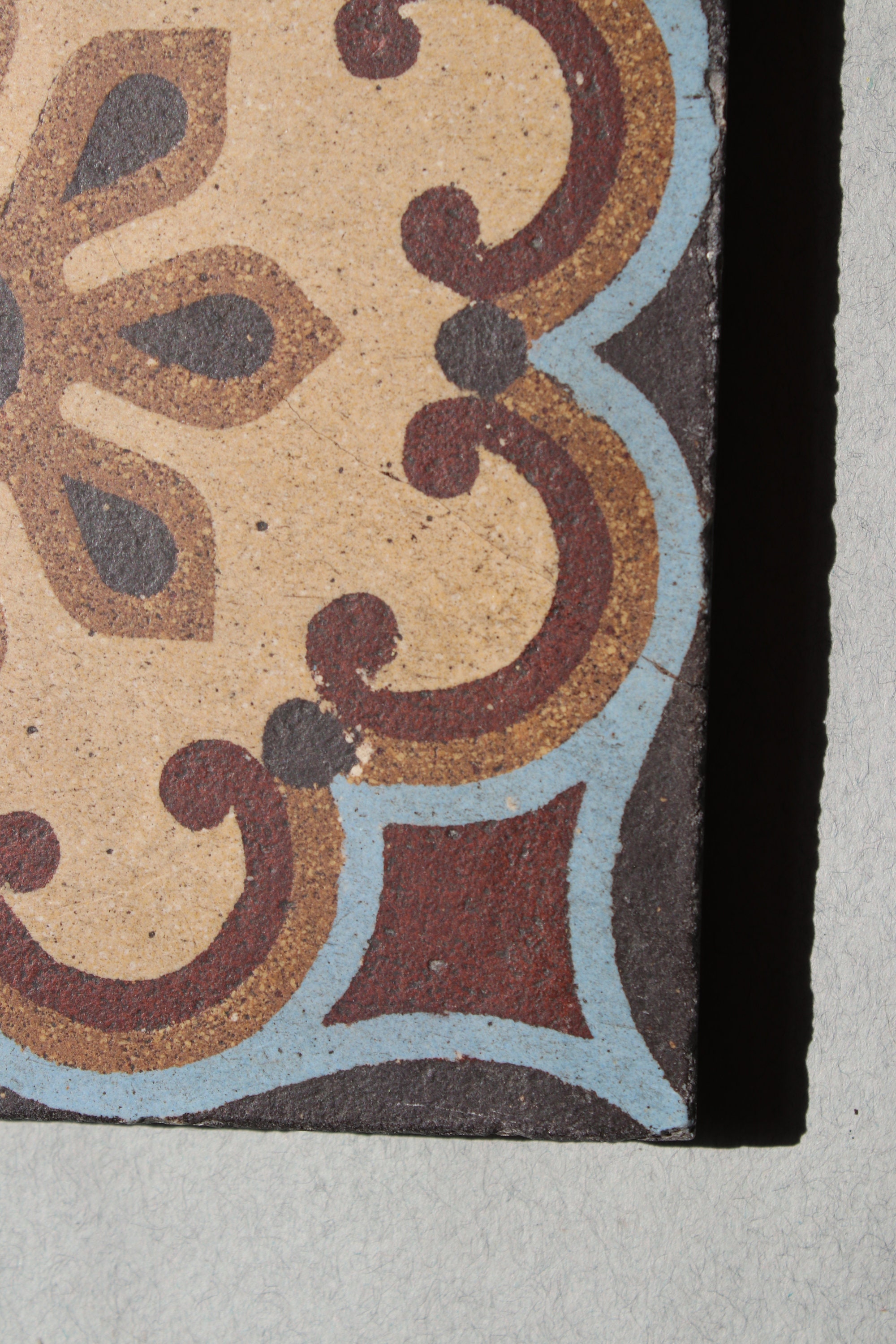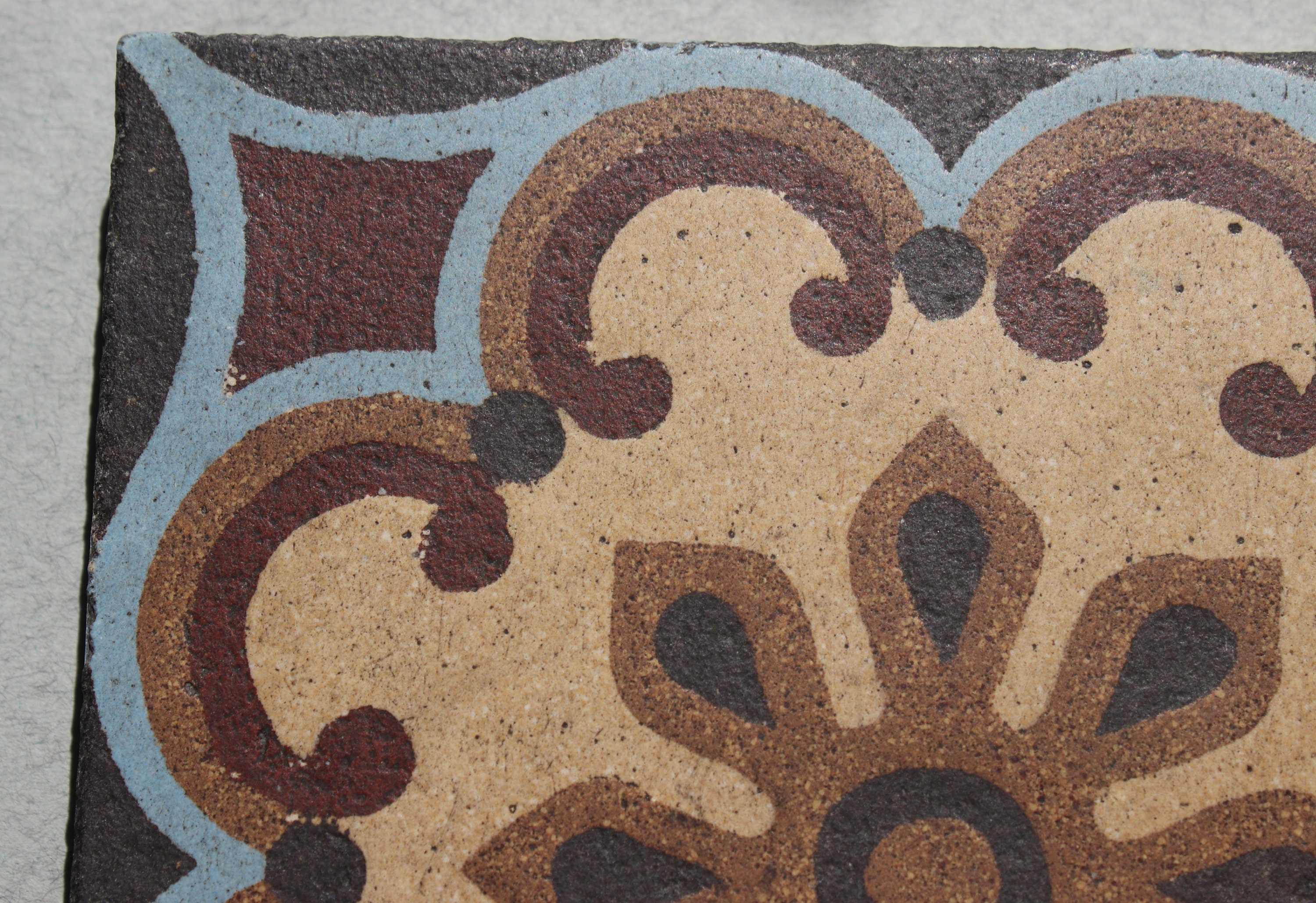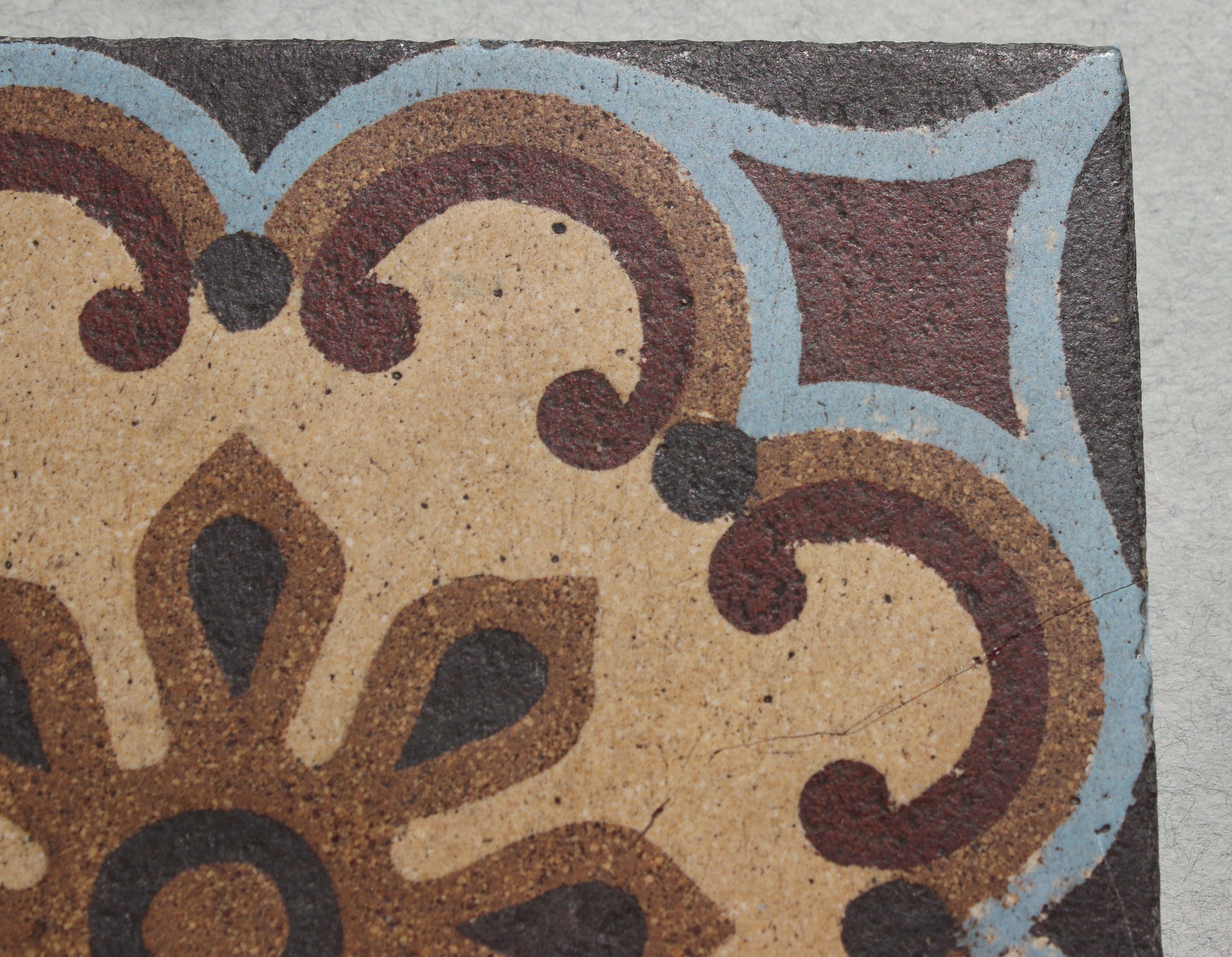Thank you to https://www.doaks.org/research/library-archives/dumbarton-oaks-archives/historical-records/from-the-archives/unexpected-finds for the information on these tiles.
Cement encaustic tile (carreaux de ciment comprimé) marked Mosaïques Maubeuge on back; 5 5/8" square and 5/8" thick; Maubeuge, France. Exact age is unknown but I'd venture a guess that this tile dates to the late 1800s-1920s. Discovered at the marché aux puces in Vanves in Paris.
Doaks.org writes: Manufactured by hand, cement tiles used different colored cements instead of the clay used in ceramic tiles. The colored cement pastes – made of oxide pigments, white cement, marble powder, and water – were poured to a depth of one-eighth inch into the patterned sections of a metal mold (moule de cloissoné, in French) that had been inserted into a wooden or metal frame. When the mold was carefully removed, the colored cement pastes fused, producing the tile’s pattern. The remainder of the frame was then filled with cement as a backing. The completed tile was subjected to pressure by either a hand or hydraulic press, and after setting, the tile was removed from the frame and dried slowly for several weeks in a carefully maintained humid environment.
Please note wear to the tile, particularly in photos 7-10. There is a hairline visible in the 8th and 10th photos.
Thank you for looking.
.
Returns & Exchanges
I gladly accept returns, exchanges, and cancellations
Just contact me within: 3 days of delivery
Ship items back to me within: 7 days of delivery
Questions about your order?
Please contact me if you have any problems with your order.
